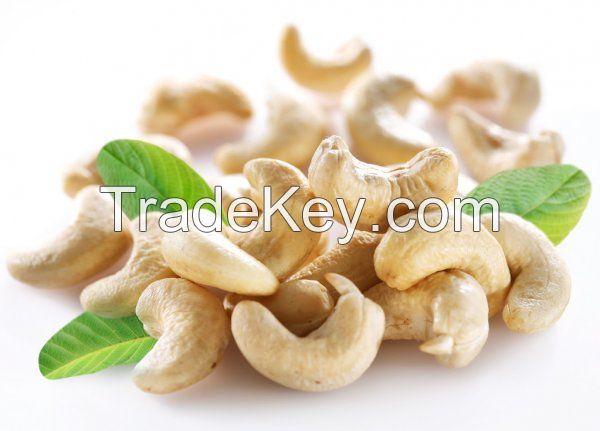
FOB Price
Get Latest Price2 ~ 4 / Kilogram ( Negotiable )
|Minimum Order
Place of Origin:
-
Price for Minimum Order:
Minimum Order Quantity:
10 Kilogram
Packaging Detail:
cotton box
Delivery Time:
7 to 14
Supplying Ability:
1000 Kilogram per Month
Payment Type:
Western Union, Money Gram, PayPal
Nigeria
Contact Person Obiejesi
Cashew nut is made up of a fruit in which the kernel is embedded. The real fruit of the cashew is commonly a nut. It is a kidney- or heart-shaped achene, in any normal variety. Its color varies from bottle green to grayish brown (dried fruit). It is attached to the end of a fleshy footstalk or peduncle,which is in fact the receptacle of the flower, that is, broadened and swollen, and forms the false fruit. The nut is composed of kernel and pericarp or shell. The kernel is slightly curved back on itself and forms two cotyledons, representing about ***5% of the nuts weight. It is wrapped in a thin, difficult to remove peel (testa), reddish-brown membrane, which in turn approximates to 5% of the whole nut. Figure 1 shows the different cashew nut parts. Cashew is of considerable economic importance because its components have numerous uses. The annual production of cashew nuts (with shells) is the highest of all tree nuts, with a value of more than 3.5 million tons. Cashew nut, native to Brazil, was introduced about two centuries ago to the Goa region of India, which became one of the major producers of cashew nuts, accounting for almost *0% of the total world export. Operations involved in the processing of cashew kernels are basically cooking; drying; cutting; decortication; peeling; classification; frying, in the case of roasted almonds; and packaging. The cashew kernel is of high food value with about ***7% oil and *1% protein contents. It is an important delicacy, which is mainly used in confectionery and as a desert nut. Cashew is globally one of the most popular tree nuts and is eaten as a snack or incorporated as an ingredient in a variety of foods. Cashew ranks third in the international tree nut trade with over *0% of the market. The kernel can be roasted and consumed; it can also be used as an adjunct in chocolate and chicken feeds. Powdered milk used in the standard milk chocolate recipe could be replaced with *5% roasted cashew kernel. In view of the increasing production of cashew globally, there is a need for an increased utilization of the cashew nut, especially the nutritious cashew kernel.Cashew nut is made up of a fruit in which the kernel is embedded. The real fruit of the cashew is commonly a nut. It is a kidney- or heart-shaped achene, in any normal variety. Its color varies from bottle green to grayish brown (dried fruit). It is attached to the end of a fleshy footstalk or peduncle, which is in fact the receptacle of the flower, that is, broadened and swollen, and forms the false fruit. The nut is composed of kernel and pericarp or shell. The kernel is slightly curved back on itself and forms two cotyledons, representing about ***5% of the nuts weight. It is wrapped in a thin, difficult to remove peel (testa), reddish-brown membrane, which in turn approximates to 5% of the whole nut. Figure 1 shows the different cashew nut parts. Cashew is of considerable economic importance because its components have numerous uses. The annual production of cashew nuts (with shells) is the highest of all tree nuts, with a value of more than 3.5 million tons. Cashew nut, native to Brazil, was introduced about two centuries ago to the Goa region of India, which became one of the major producers of cashew nuts, accounting for almost *0% of the total world export. Operations involved in the processing of cashew kernels are basically cooking; drying; cutting; decortication; peeling; classification; frying, in the case of roasted almonds; and packaging. The cashew kernel is of high food value with about ***7% oil and *1% protein contents. It is an important delicacy, which is mainly used in confectionery and as a desert nut. Cashew is globally one of the most popular tree nuts and is eaten as a snack or incorporated as an ingredient in a variety of foods. Cashew ranks third in the international tree nut trade with over *0% of the market. The kernel can be roasted and consumed; it can also be used as an adjunct in chocolate and chicken feeds. Powdered milk used in the standard milk chocolate recipe could be replaced with *5% roasted cashew kernel. In view of the increasing production of cashew globally, there is a need for an increased utilization of the cashew nut, especially the nutritious cashew kernel.